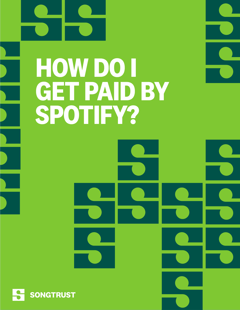Now that on-demand outlets like Spotify and Apple Music dominate the market — accounting for 83% of the music industry’s total revenue as of 2020 — there’s really no way of getting around how important it is to understand streaming royalties. Especially if you want to command the kind of payouts today’s more popular artists earn thanks to trackable streams and a robust online presence.
Royalty rates are set at a variety of different percentages — usually based on a digital service’s gross revenue over a period of time, and a host of other factors. Even industry professionals and publishing executives who have been in the industry for decades often find themselves confused.
This article is intended to provide a solid foundation in the financial realities behind streaming royalties. By the time you’ve reached the end, you should have a basic knowledge of how they work and what effect some recent — and very welcome — legal revisions might bring.
Non-Interactive vs. Interactive Streams
There are two basic kinds of streams. One is called “non-interactive”; it’s a lot like radio in how listeners do not control what’s played. (Pandora is one prime example.) The other is called “interactive,” or “on-demand,” streaming. It’s where the listener chooses the song, album, or playlist they hear, a la Spotify. Of these two potential outlets, on-demand streaming generates more money for songwriters for each individual play.
-png.png)
Some services also have multiple payout rates - one for “premium” or paid subscribers, and one for “freemium” or ad-supported subscribers, as well as different rates for bundled and “family” plans. As you might expect, the paid subscription level usually generates more money than ad-supported streams, and the higher-cost individual subscriptions pay more to artists per stream.
The Payout
To make the most of potential streaming payouts, you should be familiar with the two halves of a song — the “master recording” and the “composition.” Master recording royalties are typically paid to the party that controls the copyright of a specific song, from record labels and distributors to film studios. It represents the majority of most streaming payouts.
Songwriters receive the performance and mechanical royalties allocated to a composition. Mechanical royalties are collected by publishers via a mechanical licensing administrator — see: the Harry Fox Agency (HFA) or The Mechanical Licensing Collective (The MLC) in the U.S. — or by a Collective Management Organization (CMO) like GEMA in Germany or SACEM in France. Performance royalties usually go to your home collection society, whether it’s a Performing Rights Organization (PRO) like ASCAP or BMI in the U.S., or a CMO like SUISA in Switzerland.
For a recap on pay sources and collection societies, check out this blog post.
The Breakdown By Subscription
With roughly 155 million subscribers, Spotify boasts the highest number of paying users. While artists and songwriters haven’t seen a comparable spike in their earnings, the service recently launched a transparent “Loud & Clear” site to help explain how creators can benefit from its broad audience.
Unlike Spotify, Apple Music doesn’t have a free subscription model; this helps account for its higher per-play rate ($0.0076 per stream as of early 2021). Apple also offers an elevated payout for mechanical publishing, which is good news for songwriters.
You’ll find several articles — including this Soundcharts piece — floating around that speak to the approximate amount digital platforms pay per stream. These numbers vary quite a bit; generally speaking, Tidal pays the highest per-stream rate, and Spotify’s free tier is the lowest, followed by YouTube.
Keep Your Head Up
We saw the passage of several landmark pieces of legislation in 2018: The Music Modernization Act (MMA) here in the U.S., and the Copyright Directive in the European Union.
The MMA led to the creation of a new governing body called The Mechanical Licensing Collective (The MLC). Its mission is to replace the old system of statutory mechanical royalty rates with a more equitable and flexible rubric.
The MLC administers blanket mechanical licenses to eligible interactive streaming services in the United States. It then collects the royalties from digital service providers and pays them to the appropriate songwriters, composers, lyricists, and publishers.
By comparison, the EU’s Copyright Directive is aimed squarely at streaming services (such as YouTube) that have avoided paying royalties on copyrighted music on the grounds that they were merely providing a third-party platform and not playing an active role in the propagation of unlicensed music. Much like The MLC in the U.S., its blanket license provision for collection agencies should lead to faster and more accurate royalty payouts for rights holders.
In Conclusion
Make no mistake: The streaming royalty landscape is complicated. And while all those tiny payouts can seem bleak, the reality is that songwriters and music creators are beginning to experience the benefits of recent legal reforms. We expect the situation to only improve from this point on.
What can you do to stay on top of your streaming royalties? Make sure you have your publishing in order and stay informed about what you're earning, what you’re entitled to, and how copyright laws are changing to give individual creators a fairer deal. And if you want higher streaming payouts, make sure you’re marketing and promoting your songs to encourage additional streams.
You can manage your publishing yourself — something we strive to support and facilitate — but remember that Songtrust exists specifically to help individuals collect all their performance and mechanical royalties. Not just in the U.S., but across the globe.
Try our streaming royalty estimator to see what your top-performing streams could be worth.






